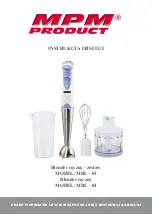
File
Doc. No.
Date
Version
Page
DBHB-20
5700 9004 055
Aug 05
1.0
5/12
Next Generation
Signal Enhancement
The RF electric performance of the DBHB-20 booster conforms to ETSI
requirement of the inter modulation and spurious emission. It avoids the
interference problem.
3.0 Introduction:
Booster
Theory / Background
In mobile cellular communication system, boosters provide the radio frequency
(RF) coverage to areas, which either lack signal, or the required signal strength
for adequate mobile phone performance. To the typical user, this translates to the
inability to place or receive mobile phone calls in or out of the area, and in most
cases will result in a dropped call while entering into the poor coverage area.
Insufficient wireless coverage can occur both indoors and outdoors, and may
include indoor areas such as office buildings, parking garages, apartment
buildings, shopping malls, and residential homes. Outdoor areas are degraded by
geographic topologies such as mountains, valleys, dense foliage and high rising
urban landscapes which can easily degrade or obstruct the cell site’s signal from
the mobile phone.
The weak coverage problem can be solved by installing an active booster
system, designed for use in a multitude of installation configurations. Booster
systems provide an effective solution by redirecting, filtering and amplifying the
available signal at the donor antenna, into the weak coverage area, through a
properly selected interior coverage antenna. The illumination of the weak
coverage area allows the user’s handset to operate as intended within the
building or weak coverage area, while maintaining the user’s call clarity and
quality, which reduces service complaints and potential subscriber churn
.
Figure 1:
Typical Booster/Coverage Configuration
Booster
Antenna































